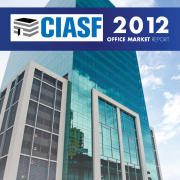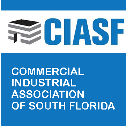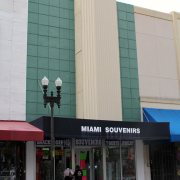Commercial Credit Crunch Creates 'Very Difficult Time'
Those in Greater Miami’s commercial real estate business say “there’s a lot of money sitting on the sidelines” ready for transactions as banks, many hurt by the market crash, are still being extra cautious about lending.
That’s created friction and frustration in the industry over what some are calling “a credit crisis.” “It’s a very difficult time, whether you’re trying to borrow from small banks or big banks or other types of lenders,” says Hal Lewis, president of the Commercial Industrial Association of South Florida (CIASF). “There’s a lot of uncertainty in the market.”
The association — a group of about 200 real estate brokers, developers, financiers and other professionals — hosted a panel discussion on the issue in Coral Gables with banking industry executives. Mr. Lewis says the consensus is that the commercial lending environment probably won’t improve for at least two years.
“It makes it much harder on my side of the business,” says Mr. Lewis, a partner at Miami law firm Pathman Lewis and head of the firm’s banking, real estate, corporate and transactional departments.
On the other side of the spectrum, bankers say they’ve been lending with stricter guidelines, in some cases by their own initiative and in others at the behest of federal regulators. Currently, there are “quite a bit” of financially distressed commercial properties in South Florida, says Marti Mang, senior vice president of the corporate lending department at Miami’s TotalBank, a subsidiary of Spain-based Banco Popular. Ms. Mang says federal regulators are holding up sales on some of those properties due to loss-share agreements between the acquiring banks and the Federal Deposit Insurance Corp. because the federal government wants to maximize returns on such transactions and doesn’t want those properties sold at large discounts. “A lot of investors are on the sidelines waiting to buy troubled assets because of FDIC policies,” she says.
Lenders also are requiring buyers to make larger down payments on properties, generally 25% and 35%, up from about 15% at the height of the market several years ago. However, lenders are requiring as little as 10% down from borrowers who qualify for US Small Business Administration, or SBA, lending assistance programs, Ms. Mang says. Before the market dropped, “the assumption (in commercial lending) was that real estate was as good as gold,” she adds. “Then 2008 came around and the guidelines tightened. It’s now a very formal process.”
As a result of the depressed market, industrial and warehouse lease rates in the county continue to be down, the association’s 2011 Miami-Dade Industrial Market Report found. “Financing is still a major issue for purchases and most are being done by owner/users acquiring Small Business Administration financing,” the report states. “In addition, commercial foreclosures, short sales, and mortgage note sales are occurring, but are not getting as much media attention as residential transactions.”
Meanwhile, office space vacancy in Miami’s central business district was 22% at the end of June, with 2.86 million square feet empty. That compares to 12% in midtown Manhattan and 17% in Chicago, according to Jones Lang LaSalle Inc., a Chicago-based real estate services firm. Investors and developers have watched commercial real estate values drop during the recession and are eager to buy into the market while prices are down, says Alina Garcia, executive vice president and chief lending officer for Banesco International Group in Coral Gables.
In most cases, however, “the market is now for people with deep pockets who can put significant cash into a project” up front, Ms. Garcia says. These investors “are buying distressed properties. Banesco is still willing to work with smaller borrowers, she says, but the bank has strict guidelines about requiring borrowers to demonstrate good cash flows from their businesses. “That’s where we come in — that’s our little niche,” Ms. Garcia say.
The SBA has continued to make financing possible for some small and mid-sized businesses that plan to occupy the buildings they buy rather than renting them out, says Tom Dixon, a founding member of the association and owner/broker at Dixon Commercial Real Estate in Miami.
Mr. Dixon says a local dentist interested in buying and moving into a small Coral Gables office building owned by one of his clients probably could qualify for an SBA-backed loan, making the deal more likely. “That’s the positive part of the story,” Mr. Dixon says.
While some banks have stopped lending, microlenders report a rise in applications from small businesses with high credit scores, Gina Harman, president of the New York-based microlender Accion USA, recently told Bankrate.com. Microloans generally are small, short-term loans made to financially distressed entrepreneurs. With demand for microloans exceeding supply, according to Bankrate.com, this year’s federal fiscal stimulus package earmarked an additional $30 million for the SBA microloan program, which previously totaled $20 million.
Source: Miami Today
-------------------------
Get the latest industry news and information from CRE-sources delivered right to your email inbox!
And we promise…no more than one email each morning. CLICK HERE TO SUBSCRIBE TODAY!




